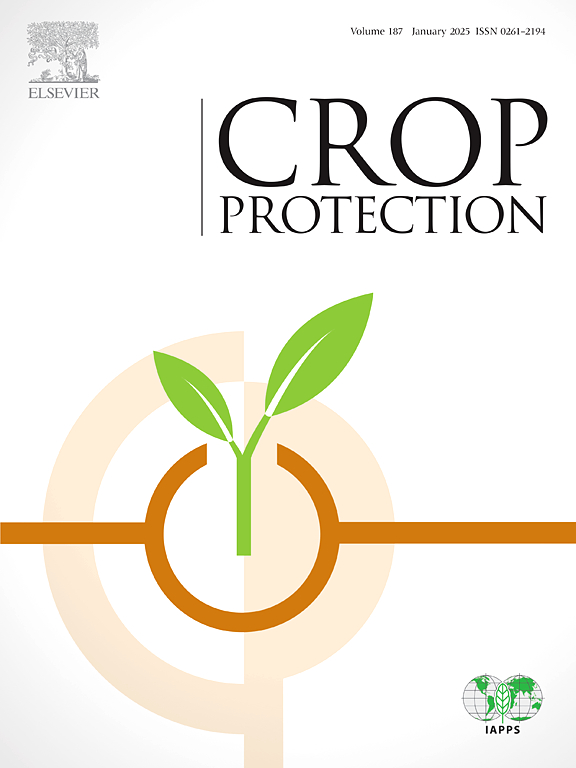Papaya latex and papain as promising solutions for the management of Meloidogyne javanica associated with tomato plants
IF 2.5
2区 农林科学
Q1 AGRONOMY
引用次数: 0
Abstract
Nematodes from the Meloidogyne genus present a major challenge to agricultural progress, requiring control methods that are environmentally safe and human friendly. This study assessed the nematicidal effects of papaya latex and papain, both in vitro and in vivo, on tomato plants, targeting second-stage juveniles (J2s) and eggs of Meloidogyne javanica. The results demonstrated that papaya latex effectively increased J2 mortality, reaching 100% at the highest concentration (1%). In contrast, papain resulted in a maximum J2 mortality of 72% at its highest concentration (3.5%). Additionally, papaya latex consistently inhibited egg hatching, with an average reduction of 45% in the first experiment and reductions of 39% and 61.9% in the second experiment at concentrations of 1.5% and 3%, respectively. Similarly, papain suppressed egg hatching at all concentrations, leading to an average reduction of 44% in the first experiment and 55% in the second. In the first replication of the in vivo experiment with tomato plants, the highest concentration of papaya latex (4%) reduced M. javanica infectivity by 68% and reproduction by 89%. In the second experiment, this concentration reduced infectivity by 70% and reproduction by 80%. For papain, infectivity was reduced by 55% in the first experiment and 40% in the second. While reproduction did not differ significantly between treatments and the control in the first experiment, it decreased by 30% in the second. Further experiments showed that both papaya latex and papain effectively activated the plant defense system in tomato. Overall, these findings add to the growing body of evidence supporting the use of natural compounds for sustainable nematode management.
求助全文
约1分钟内获得全文
求助全文
来源期刊

Crop Protection
农林科学-农艺学
CiteScore
6.10
自引率
3.60%
发文量
200
审稿时长
29 days
期刊介绍:
The Editors of Crop Protection especially welcome papers describing an interdisciplinary approach showing how different control strategies can be integrated into practical pest management programs, covering high and low input agricultural systems worldwide. Crop Protection particularly emphasizes the practical aspects of control in the field and for protected crops, and includes work which may lead in the near future to more effective control. The journal does not duplicate the many existing excellent biological science journals, which deal mainly with the more fundamental aspects of plant pathology, applied zoology and weed science. Crop Protection covers all practical aspects of pest, disease and weed control, including the following topics:
-Abiotic damage-
Agronomic control methods-
Assessment of pest and disease damage-
Molecular methods for the detection and assessment of pests and diseases-
Biological control-
Biorational pesticides-
Control of animal pests of world crops-
Control of diseases of crop plants caused by microorganisms-
Control of weeds and integrated management-
Economic considerations-
Effects of plant growth regulators-
Environmental benefits of reduced pesticide use-
Environmental effects of pesticides-
Epidemiology of pests and diseases in relation to control-
GM Crops, and genetic engineering applications-
Importance and control of postharvest crop losses-
Integrated control-
Interrelationships and compatibility among different control strategies-
Invasive species as they relate to implications for crop protection-
Pesticide application methods-
Pest management-
Phytobiomes for pest and disease control-
Resistance management-
Sampling and monitoring schemes for diseases, nematodes, pests and weeds.
 求助内容:
求助内容: 应助结果提醒方式:
应助结果提醒方式:


